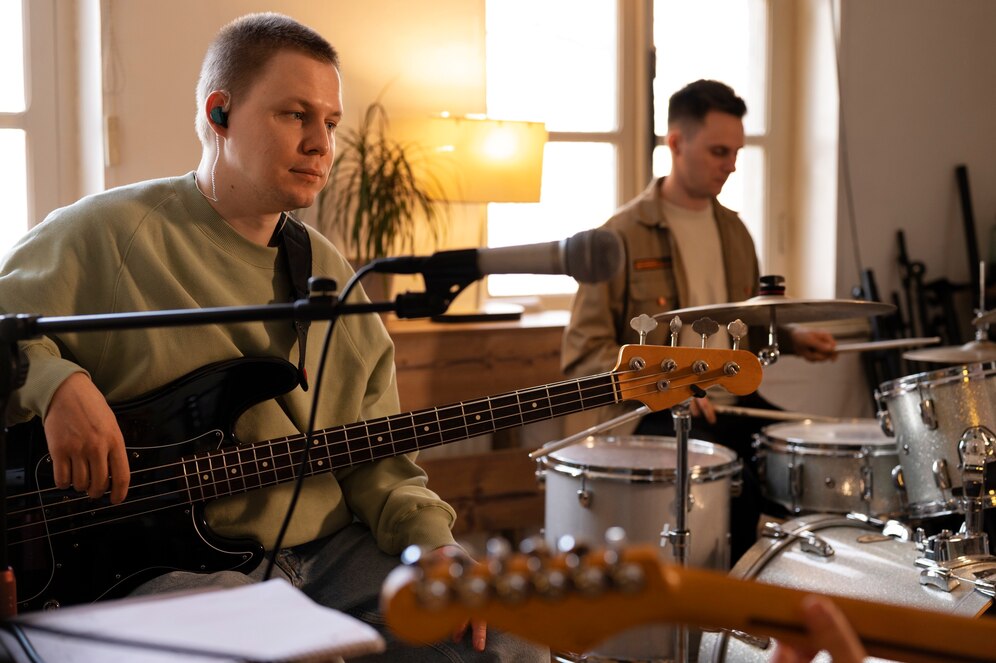
Imagine this: You’re a musician with a dream—an album swirling in your head, a tour itching to hit the road, or maybe a wild music video concept that could go viral. But there’s one tiny problem: your bank account isn’t exactly singing the same tune. Enter crowdfunding, the modern-day fairy godmother for artists everywhere. It’s not just about raising money; it’s about building a community, sharing your story, and turning fans into collaborators. Over the past decade, platforms like Kickstarter and Indiegogo have transformed how musicians fund their projects, with artists like Amanda Palmer raising a jaw-dropping $1.2 million for her 2012 album. So, how do you make your campaign a hit instead of a flop? Let’s dive into the art and science of successful music crowdfunding, with stories, strategies, and a few hard-earned lessons along the way.
Why Crowdfunding Works for Musicians
Crowdfunding isn’t just a cash grab—it’s a handshake between you and your audience. Unlike traditional funding, where you’re pitching to suits in boardrooms, this is personal. You’re asking your fans, friends, and even strangers to believe in your vision. The numbers back this up: Statista reports that the global crowdfunding market hit $13.9 billion in 2023, with music projects consistently ranking among the top categories. Why? Because music is emotional. People don’t just fund a song—they fund a feeling, a memory, a connection.
Take Ben Folds, for example. In 2017, he launched a modest campaign to fund a live orchestral album. He didn’t just ask for money; he invited fans into the process, offering rewards like signed sheet music and a chance to join him in the studio. The result? He smashed his $50,000 goal in days. Crowdfunding works when it’s less about “gimme” and more about “let’s create this together.” That’s the magic we’re unpacking here.
Laying the Groundwork: Pre-Campaign Prep
Before you hit “launch,” the real work begins. A successful campaign isn’t thrown together overnight—it’s a carefully tuned instrument. Start with your story. Why does this project matter to you? Maybe it’s your debut EP after years of busking, or a concept album inspired by a personal loss. Whatever it is, make it raw and real. People don’t fund widgets; they fund passion.
Next, know your audience. Are they die-hard fans who’ve been with you since your coffee shop gigs, or are you reaching new ears? Use tools like Bandcamp analytics or social media insights to figure out who’s listening and where they hang out. This isn’t just guesswork—it’s strategy. When folk artist Anaïs Mitchell crowdfunded Hadestown (yep, the Tony-winning musical), she leaned on her tight-knit fanbase, built over years of touring, to spread the word. The takeaway? Your pre-existing community is your launchpad.
Set a realistic goal, too. Research shows that campaigns asking for $10,000 or less have a higher success rate than those aiming for the moon. Calculate your costs—studio time, mixing, mastering, rewards, shipping—and pad it by 10-15% for unexpected hiccups. Transparency here builds trust. Fans can smell a vague “help me make music” pitch from a mile away.
Crafting a Killer Campaign Page
Your campaign page is your stage—make it sing. Start with a video. It doesn’t need Hollywood polish, but it does need you. A study by Kickstarter found that campaigns with videos are 50% more likely to succeed. Keep it short (2-3 minutes), heartfelt, and punchy. Introduce yourself, share your “why,” and give a sneak peek—maybe a riff from the album or a behind-the-scenes clip. When synth-pop duo Sylvan Esso crowdfunded their Echo Mountain Sessions, their quirky, authentic video hooked fans instantly.
The written pitch matters, too. Break it into chunks: who you are, what you’re making, why it’s special, and what’s in it for backers. Use bold subheadings and bullet points to keep it skimmable. Here’s a pro tip: weave in a call-to-action like “Join me on this journey” to spark that collaborative vibe. And don’t skimp on visuals—high-quality photos, album art mockups, or even a goofy shot of you in the studio add personality.
Rewards are the cherry on top. Think beyond the obvious (digital downloads, CDs). Offer experiences: a virtual hangout, a songwriting session, or a personalized cover song. When jazz artist Maria Schneider funded her Grammy-winning album Data Lords, she included a “digital dinner party” reward. Fans ate it up—literally and figuratively. Keep rewards affordable to produce and ship, though—overpromising can sink you later.
Building Hype: The Pre-Launch Buzz
The best campaigns don’t start on day one—they start weeks before. Build anticipation like you’re teasing a single drop. Share snippets on Instagram or TikTok—maybe a lyric scribbled on a napkin or a clip of you tweaking a mix. Email your mailing list with a “save the date” vibe. When indie rocker Julien Baker crowdfunded her Little Oblivions vinyl pressing, she dropped cryptic posts that had fans buzzing before the campaign even launched.
Partner up, too. Reach out to fellow musicians, bloggers, or podcasters in your niche. A shoutout from a trusted voice can amplify your reach. And don’t sleep on press—pitch your story to local outlets or music sites like Pitchfork. A well-timed article can drive traffic straight to your page.
Launch Day: Hitting the Ground Running
Day one sets the tone. Aim for 20-30% of your goal within the first 48 hours—data from CrowdCrux shows early momentum signals credibility to latecomers. Rally your inner circle—family, friends, superfans—to pledge early. Their support isn’t just cash; it’s social proof. When electronic artist Petit Biscuit launched his campaign, his core fans pushed him past 25% in hours, triggering a snowball effect.
Go live everywhere: post on socials, email your list, even hop on a livestream to celebrate. Keep the energy high but authentic—nobody likes a hard sell. Thank backers publicly (with permission) to stoke the FOMO. The goal? Make it feel like a party everyone wants to crash.
Keeping the Momentum: Mid-Campaign Mastery
The middle stretch is where campaigns stall—or soar. Update backers regularly. Share wins (a killer guitar solo you nailed) or hiccups (the drum kit that broke mid-session). These posts keep fans invested. When folk duo The Civil Wars crowdfunded their final album, they posted raw studio footage that turned backers into cheerleaders.
Cross-promote with other creators, too. A guest spot on a friend’s podcast or a collab post can rekindle interest. And don’t shy away from stretch goals—extra tracks, a bonus video—if you’re close to overshooting. Just keep them realistic; overreaching can erode trust.
Closing Strong: The Final Push
The last 48 hours are make-or-break. Remind your audience the clock’s ticking—email, post, text your mom if you have to. Sweeten the pot with a last-minute reward (a signed poster, a shoutout in the liner notes). When punk band Pup crowdfunded their live album, they added a “mystery merch” tier in the final stretch, pushing them over the edge.
Celebrate every pledge, big or small. A personal thank-you video can seal the deal. And when that funding bar hits 100%? Pop the champagne—but don’t ghost. The real work—delivering—starts now.
Post-Campaign: Delivering the Goods
Fulfilling rewards is where trust is cemented—or broken. Map out a timeline before you launch: when will the album drop, when will shirts ship? Communicate delays early and often. Fans forgave Radiohead’s In Rainbows crowdfunding hiccups because the band kept them in the loop. Use tools like BackerKit to streamline shipping and updates.
And don’t vanish after the cash clears. Share the finished product, invite backers to the release party (virtual or IRL), and keep them in your orbit. They’re not just funders—they’re your tribe.
Comparison Table: Crowdfunding Platforms for Musicians
Which Platform Suits Your Sound?
| Platform | Best For | Fees | All-or-Nothing? | Unique Perk |
|---|---|---|---|---|
| Kickstarter | Big, ambitious projects | 5% + payment fees | Yes | Massive visibility |
| Indiegogo | Flexible funding needs | 5% + payment fees | No (optional) | Keep funds even if goal isn’t met |
| PledgeMusic (RIP) | Direct-to-fan connection | N/A (shut down 2019) | No | Legacy lesson: vet platforms |
| Patreon | Ongoing support vs. one-offs | 5-12% + fees | No | Monthly income stream |
Kickstarter’s all-or-nothing model suits high-stakes albums, while Indiegogo’s flexibility fits smaller experiments. Patreon’s a slow burn for steady creators. Pick based on your project—and your stomach for risk.
FAQ: Your Crowdfunding Questions, Answered
Q: How much should I ask for?
A: Tally your costs (recording, rewards, shipping) and add a buffer. Aim low enough to hit the goal but high enough to deliver quality. Most successful music campaigns land between $5,000 and $15,000.
Q: What if I don’t have a big fanbase?
A: Start small—focus on friends, family, and local scenes. Leverage social media to grow organically. A compelling story can hook strangers, too.
Q: How long should my campaign run?
A: 30 days is the sweet spot—long enough to build buzz, short enough to keep urgency. Shorter (15-20 days) works if you’ve got a hyped-up base.
Q: What’s the biggest mistake to avoid?
A: Overpromising rewards you can’t deliver. Shipping delays or undelivered perks can tank your rep. Plan conservatively.
Q: Can I crowdfund multiple projects?
A: Yep, but space them out. Back-to-back campaigns can fatigue your audience. Build goodwill by delivering first.
Conclusion: Turning Notes into Dollars—and Dreams
Crowdfunding a music project isn’t just about the money—it’s about the movement. It’s the late-night studio sessions fueled by fan faith, the handwritten thank-you notes stuffed in vinyl sleeves, the moment you hit “play” on a dream you didn’t build alone. From Anaïs Mitchell’s grassroots Hadestown to Ben Folds’ orchestral triumph, the stories prove it: when you invite people in, they’ll carry you further than you imagined.
So, what’s your next step? Maybe it’s sketching out that campaign video, tallying your budget, or teasing a riff to your followers. Start small, think big, and play your heart out. The crowd’s waiting—and they’re ready to sing along. What’s the song only you can write, and who’s out there dying to hear it? Go find out.

